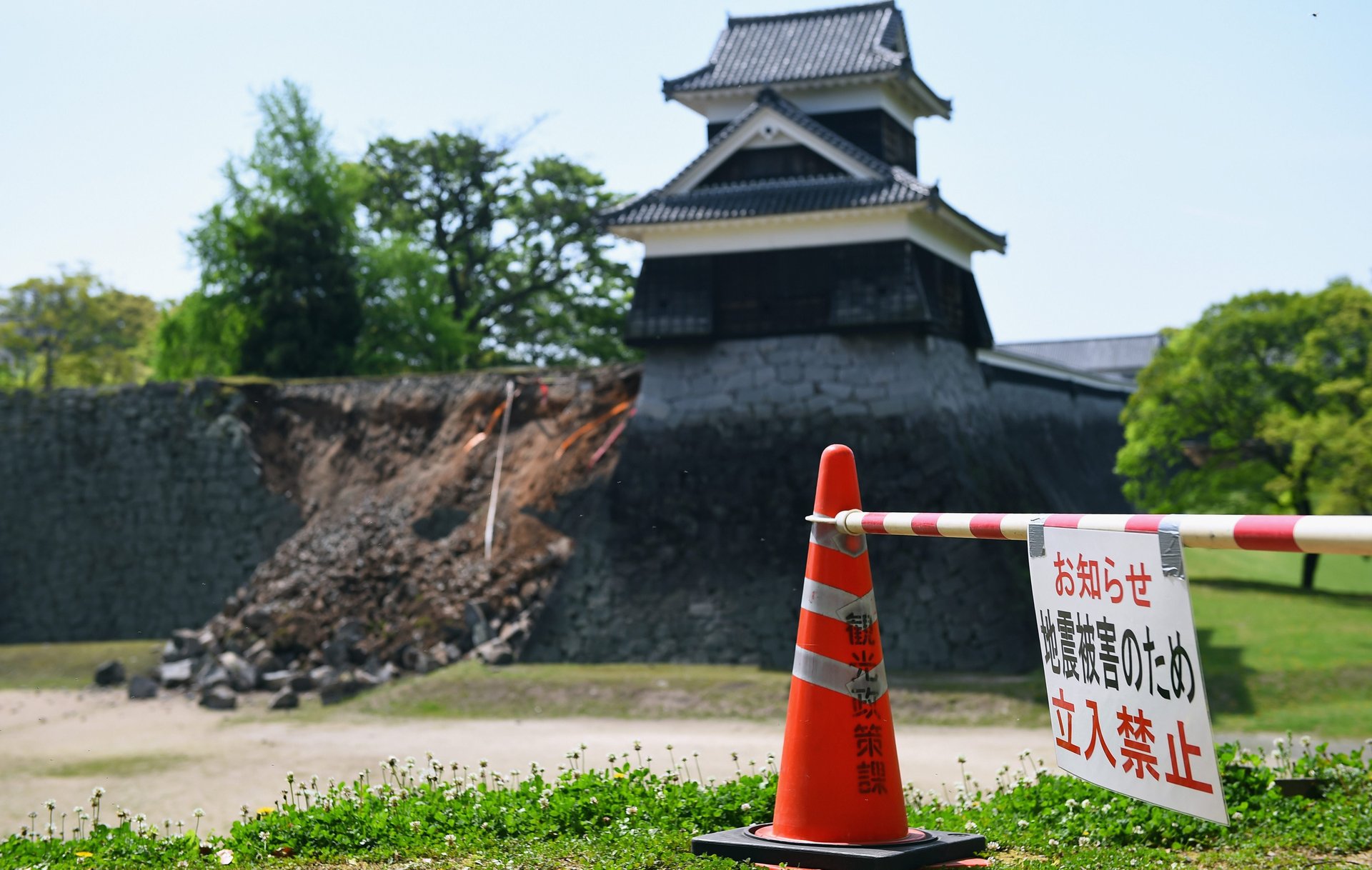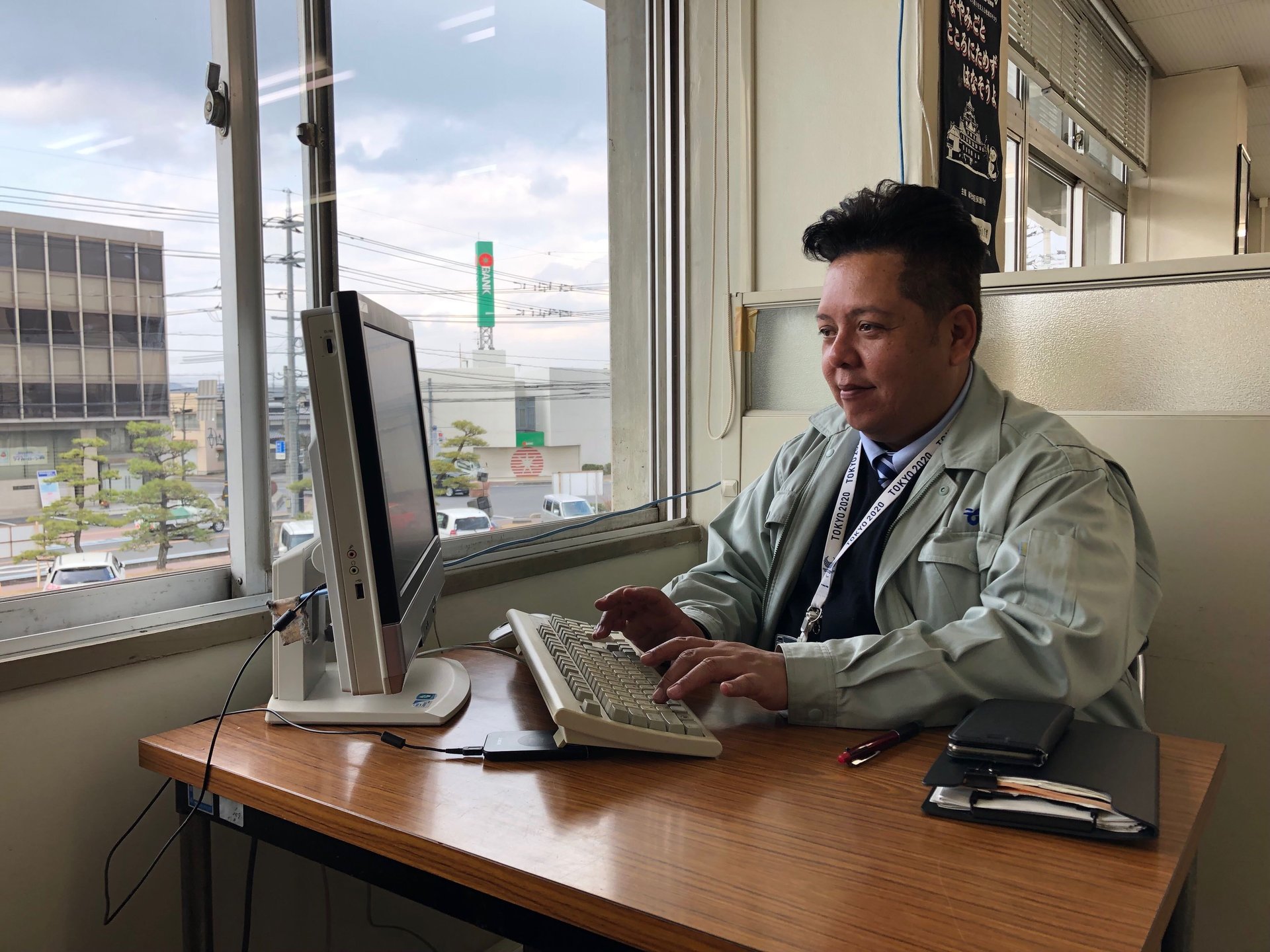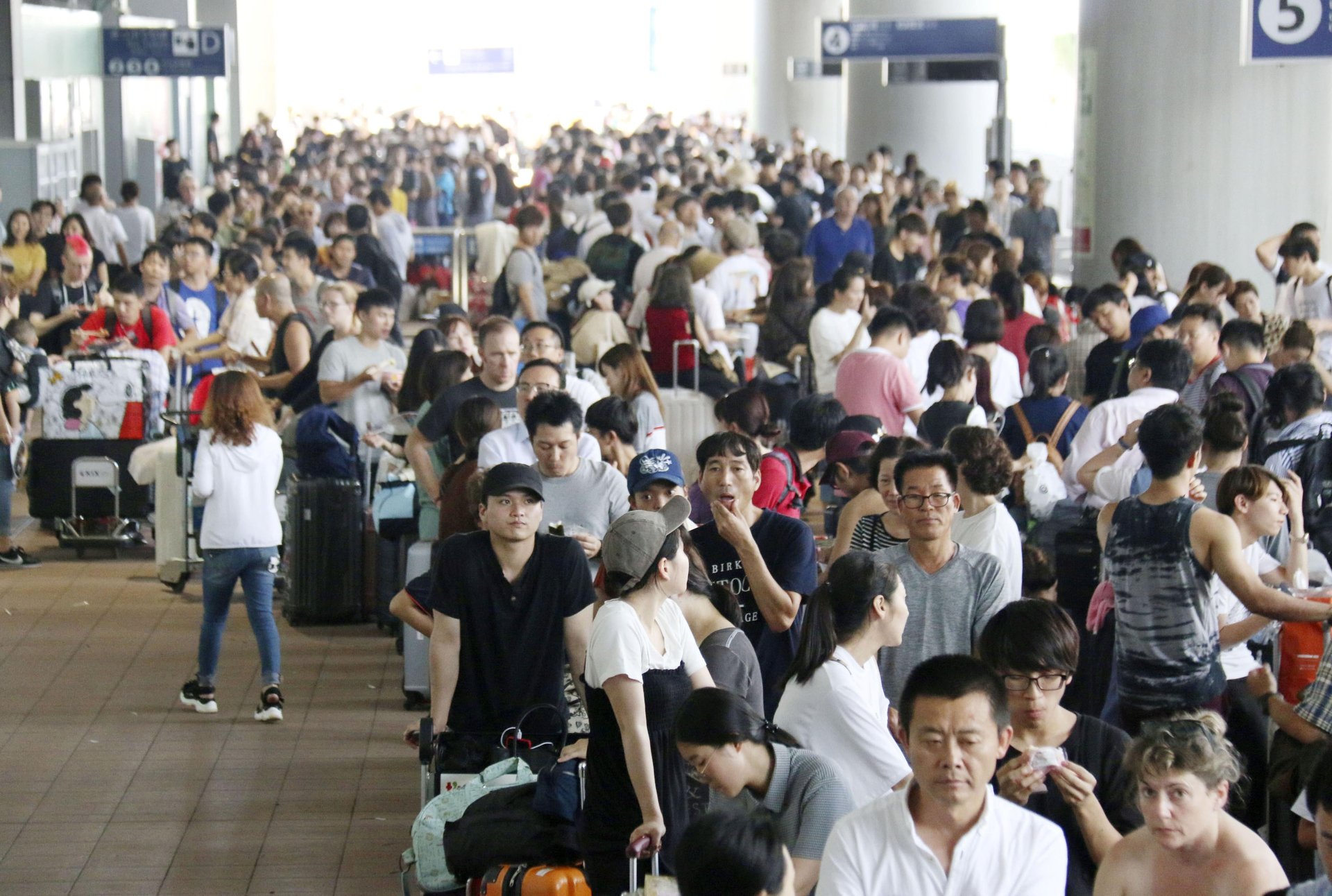A less polite version of Japanese is helping foreigners stay safe during disasters
As torrential rains battered parts of western Japan in July last year, Tan Shun Wai, a long-time employee at Soja’s City Hall, found himself inundated with messages and calls from worried foreigners. Many were unable to understand the government’s disaster notices that were being sent to their phones.


As torrential rains battered parts of western Japan in July last year, Tan Shun Wai, a long-time employee at Soja’s City Hall, found himself inundated with messages and calls from worried foreigners. Many were unable to understand the government’s disaster notices that were being sent to their phones.
With its use of Chinese characters (kanji) and the honorific style of writing, official notices are often unintelligible to elementary learners of Japanese—the term for “evacuation advisory,” or hinan kankoku (避難勧告), is rendered in four complex Chinese characters written in 54 strokes. As Japanese residents responded to the government warnings about rising water levels by moving into shelters, Tan sent messages in Portuguese, English, and Spanish to worried foreigners in Soja and in neighboring towns, instructing them to follow suit.
The 45-year-old, who has been in charge of multicultural affairs at City Hall since 2009, became interested in how to better assist foreigners during disasters after the 2011 earthquake and tsunami. The catastrophe made him realize that incidents where foreigners are at a loss following a natural disaster would become increasingly common in a country plagued by earthquakes, typhoons, heavy rains, and volcanic eruptions—especially with the number of foreign residents and tourists steadily climbing.

Unlike foreigners, “Japanese people have been taught to be prepared for disasters since they were kids,” said Tan, whose father emigrated from Hong Kong to Brazil, a background that informs his own desire to help others settle in to life in Japan.
One thing that Tan has identified as crucial to improving communication is simplifying Japanese for situations where time is crucial. Tan is encouraging his colleagues at City Hall to use more yasashii nihongo, or “easy Japanese” when talking to non-Japanese people (“yasashii” can also be translated to mean “friendly”). He’s also considering creating an account on Line, the dominant chat app in Japan—itself a response to one of the country’s worst natural disasters—to communicate with people using easy Japanese.
“I tell people not to use keigo with foreigners,” said Tan, referring to the name for the honorific register in Japanese. “They ask me, ‘What is yasashii nihongo?’ I say it’s like Japanese at a grade three or four level.”
Less polite, more direct
Indeed, yasashii nihongo was developed specifically with disaster prevention in mind, when a group of academics came together following the massive earthquake that hit Kobe in 1995 as it became apparent that many foreigners were unable to understand emergency notices—but it’s coming into more prominent use as Japan reluctantly becomes more multicultural.

According to Japanese expert Nanette Gottlieb, easy Japanese requires the understanding of about 2,000 basic words, as well as the grammatical constructions of sentences describing everyday actions. In written materials, Chinese characters should be supplemented with the Japanese alphabet, or furigana, to assist with pronunciation, while complex words relating to disasters such as “aftershocks” (yoshin) might be broken down to “the earthquake which comes after the first one.”
Learning Japanese presents challenges that are absent from learning other languages, with many of those linked to the importance of formality. That forces speakers to pay close attention to the hierarchy of relationships resulting in a form of speech and writing that can be quite verbose, explained Ho Chi Ming, an associate professor in Japanese at the Chinese University of Hong Kong. The keigo honorific register is itself subdivided into three classes of formality, for example, for speaking to someone “above” yourself, or speaking in a humble fashion about yourself. The ability to read and write Chinese characters, meanwhile, is seen as a marker of being more educated, Ho added, making it mandatory in officialdom and professional settings.
But Japan has undergone dramatic changes since the earthquake of 1995—as Tan predicted, incidents of non-Japanese people getting caught up in disasters are becoming more frequent as Japan opens its doors to ever-greater numbers of tourists and migrant workers. The current numbers of more than 30 million tourists a year are expected to soar even further as Japan prepares to host the Rugby World Cup in the fall and the Olympics in 2020. Meanwhile, a new immigration bill implemented earlier in April could see over 300,000 more foreign workers coming to the country this year.
“From now on, the number of people who do not have a high level of Japanese proficiency will increase in Japan… A common language is needed between Japanese and non-Japanese when both don’t have good English proficiency,” said Isao Iori, a professor of Japanese linguistics at Hitotsubashi University in Tokyo, who is a proponent of wider use of easy Japanese (pdf).
The rains in western Japan last year ended up claiming over 200 lives, including two in Soja (link in Japanese), where the number of foreigners has doubled over the last five years (link in Japanese) but still makes up just 2.2% of its population of 69,000. Elsewhere, however, more calamitous scenes of foreigners being stranded following natural disasters unfolded, posing stark reminders of how unprepared the country is for such situations. Thousands of travelers, for example, were left stranded in Kansai International Airport in September after a powerful typhoon caused severe damage to and flooding in the building. That same month, an earthquake struck Sapporo in Hokkaido, with foreigners complaining of insufficient support in non-Japanese languages.

Local authorities in Japan have pressed ahead with improving their multilingual capabilities (paywall) to prevent such situations from recurring, for example by increasing the use of AI-powered translation software and distributing emergency information in different languages. The city of Kumamoto, however, used easy Japanese when it was hit by a powerful quake in 2016, with a non-profit organization putting up notices (link in Japanese) in simplified forms.
Commands normally written in the honorific register, for example, were modified to use more conversational ways of saying “please,” while disaster-specific vocabulary written in Chinese characters such as “certification of disaster” was translated as “the piece of paper on which the destruction to buildings is written.”
Kayoko Hashimoto, an expert on Japanese language policy at the University of Queensland in Australia, however, said that she wanted to see the central government take a more central role in the “systematic development of (yasashii nihongo), rather than leaving it as a regional responsibility.”
Doctors, hospitals are catching on
Health care is another field where there is an urgent need to adopt yasashii nihongo, as the influx of both foreign workers and overseas visitors puts a strain on Japanese hospitals—while a fear of being unable to communicate with Japanese medical staff can sometimes even deter foreigners with serious conditions from seeking help.
“I think Japan is really struggling (on that front)—they don’t really know how to deal,” said Julija Knezevic, a medical interpreter based in Osaka who also holds free workshops for Japanese medical professionals on how to talk to foreign patients.
At a seminar (link in Japanese) held in Saitama in December aimed at promoting easy Japanese among medical professionals, Yuko Takeda, a professor in medical education at Juntendo University, provided examples of how to use easy Japanese in medical scenarios. The word for “allergies,” for example, could be replaced with a simple sentence explaining to a person that if they ingest a particular food or drink, their skin would become red or itchy. She also urged participants to drop honorific forms altogether when communicating with foreign patients.
In other areas, easy Japanese is gaining ground in tourism, such as Yanagawa city, which has trained its staff to communicate in it with foreigners. Tokyo’s Minato district started offering information for residents in easy Japanese in January through social media and email on topics such as garbage disposal and child care. And as part of a push to be more inclusive of foreigners, a newspaper serving western Japan recently began publishing (link in Japanese) news online in easy Japanese.
“It’s not ‘beautiful’ Japanese,” said Ho, the academic. “But it’s time for (Japanese) people to think about whether they can do something to change their language, and help others understand their culture.”